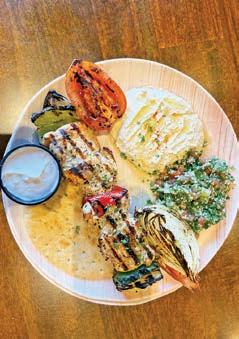
5 minute read
Eating With Our Eyes
Eating With Our Eyes
The Culinary Art Of Food Presentation
It was the First Century Roman gourmand, Apicius, who purportedly claimed that, “We eat first with our eyes.” Today, food presentation, known as plating, has been proved to enhance appetite by numerous scientific studies, confirming that Apicius was right all along. Think of how hungry you become upon seeing an ad featuring a beautifully presented meal, or the building anticipation from viewing photos on a menu. This occurs because plating activates our senses of sight, smell, and texture, along with providing a perspective of balance and proportion. It not
only elevates the overall dining experience, but also a restaurant’s professional image, which in turn attracts more customers.
If in doubt of plating’s influence, think of the difference between seeing a careless mishmash of food splatted onto your plate, versus a well-balanced display of interesting colors, differing heights, and even a garnish. Further imagine it placed upon a beautifully shaped plate or bowl with fine silverware and crisp table linens. Few foodies would negate the enhanced satisfaction of the meal and how well the culinary experience would be remembered.
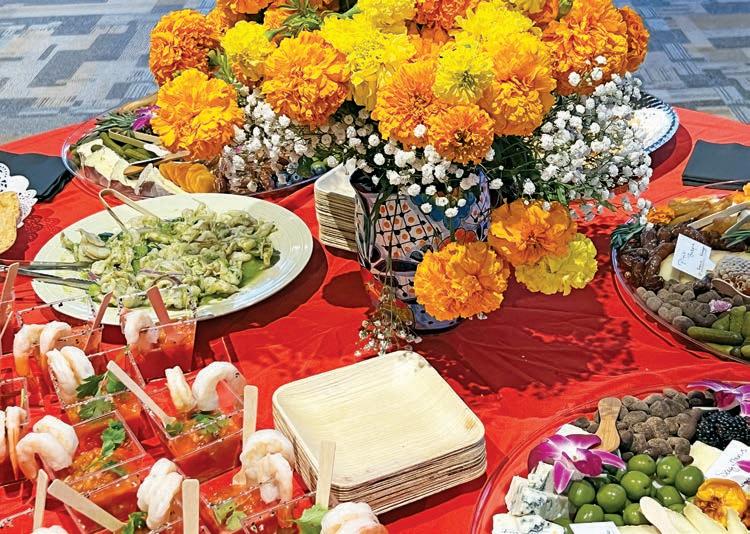
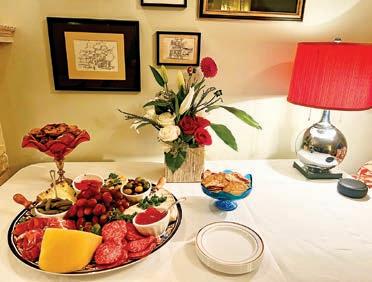

Consider, too, that restaurant goers are more likely to linger over a well-presented meal. Even children enjoy a meal where the food is arranged in a fun shape, such as toast soldiers, broccoli trees, and veggie volcanos. How many parents have resorted to such trickery for enticing their tykes into eating their vegetables? In this sense, we really do eat with our eyes.
Just how did this evolution of food presentation come about? Art historians, archaeologists, and botanists have all contributed to our knowledge of ancient cuisine and cultural eating habits through multiple advanced technologies such as: the translation of written texts; residue analyses from food containers such as pottery; remains of bone and metal eating utensils; the flotation of fossilized plant seeds, animal bones, and fish scales; and even coprolites (fossilized human feces). All of these methods paint a picture of what our ancestors ate, how they gathered and prepared food, and how they consumed it.
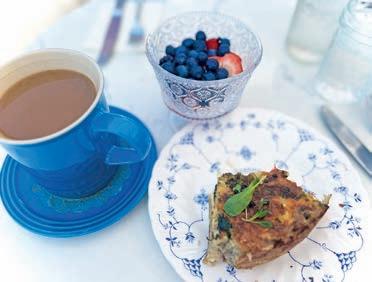
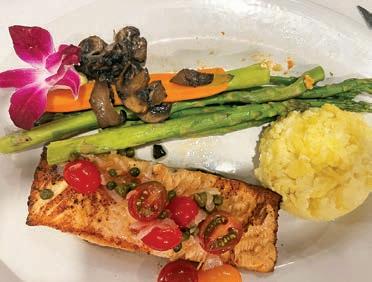
Though the oldest known pottery dates to 29,000 BCE, the turn to kiln firing became more common around 6,000 BCE with the invention of agricul ture. Humans showed a proclivity for decorating their pots from the beginning, which perhaps was the forerunner of today’s china patterns.
While the Romans are well known for their debauched dining and vomi toriums, the Macedonians ushered in the first truly elaborate and sensational food presentations. Musicians and danc ing women accompanied the indulgent excesses of food with cooked dishes such as fish and fowl presented in a pig’s belly, and served on platters of precious met als, utensils of gold, and ivory bread baskets.
Today, although not quite as decadent, Coronado’s plethora of restaurants offers a kaleidoscope of visual culinary treats. When local professional caterer and owner of the Cays’ Calypso Cafe, Hanan Martha, was asked why food presentation is so important, her first reply was, “Because everyone takes photos of their food!” While some may find the practice annoying, it’s also true that photos of well-presented food on Facebook and Instagram can boost a restaurant’s cred and bring in customers.
Hanan’s more measured response is a reflection of the science. “We eat with our eyes,” she said, further explaining that her patrons expected clean plates with food that appeared moist and tasty to satisfy visual expectations.
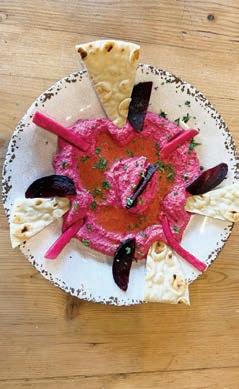
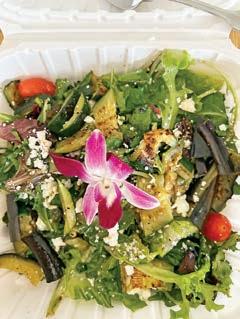
The immediate response of Andrew Proust, CFO/COO of Clayton’s Bakery and Bistro, was, “We eat with our eyes! You see something tasty and you anticipate it being tasty.”
Clayton’s owner, Mary Frese, offered a more personal perspective. “Food presentation has been part of a process since the beginning of my career, which I learned from my mother and grandmother,” she explained. “An innate emphasis on the entire composition of flowers, color, and accessories” is fondly remembered from her first February birthday party, heavily themed, of course, in red.
The aesthetic of the party created a lasting impression and a passion that led to her career.
“It’s a joy to share this with our guests,” she confides, “and is my favorite part of the business, to be honest!”
An uncannily similar response to the question came from Barbara Massey, Pastry Chef and part owner of Tartine’s, as well as a graduate of the Cordon Bleu. “In the world of pastry and dessert, we eat first with our eyes, so food presentation is paramount. But attractive and fancy will never mask mediocrity when it comes to taste. High quality ingredients and a balance of flavors is always a priority.”
Further confirmation of the visual component of culinary arts is illustrated in the Coronado Flower Show’s awards for Table Designs. This year’s theme of Cirque des Fleurs promises the jocular categories of “The Sword Swallower’s Intermission,” “After Party with the Acrobats,” “Equestrian Buffet,” and the poignantly themed, “Sad Clown, Cocktail for One.”
Don’t miss this riveting array of tablescapes at the 2025 Flower Show on April 12-13, and be sure to enjoy the culinary arts of our local restaurants.
Just remember to bring your phone for photos!
